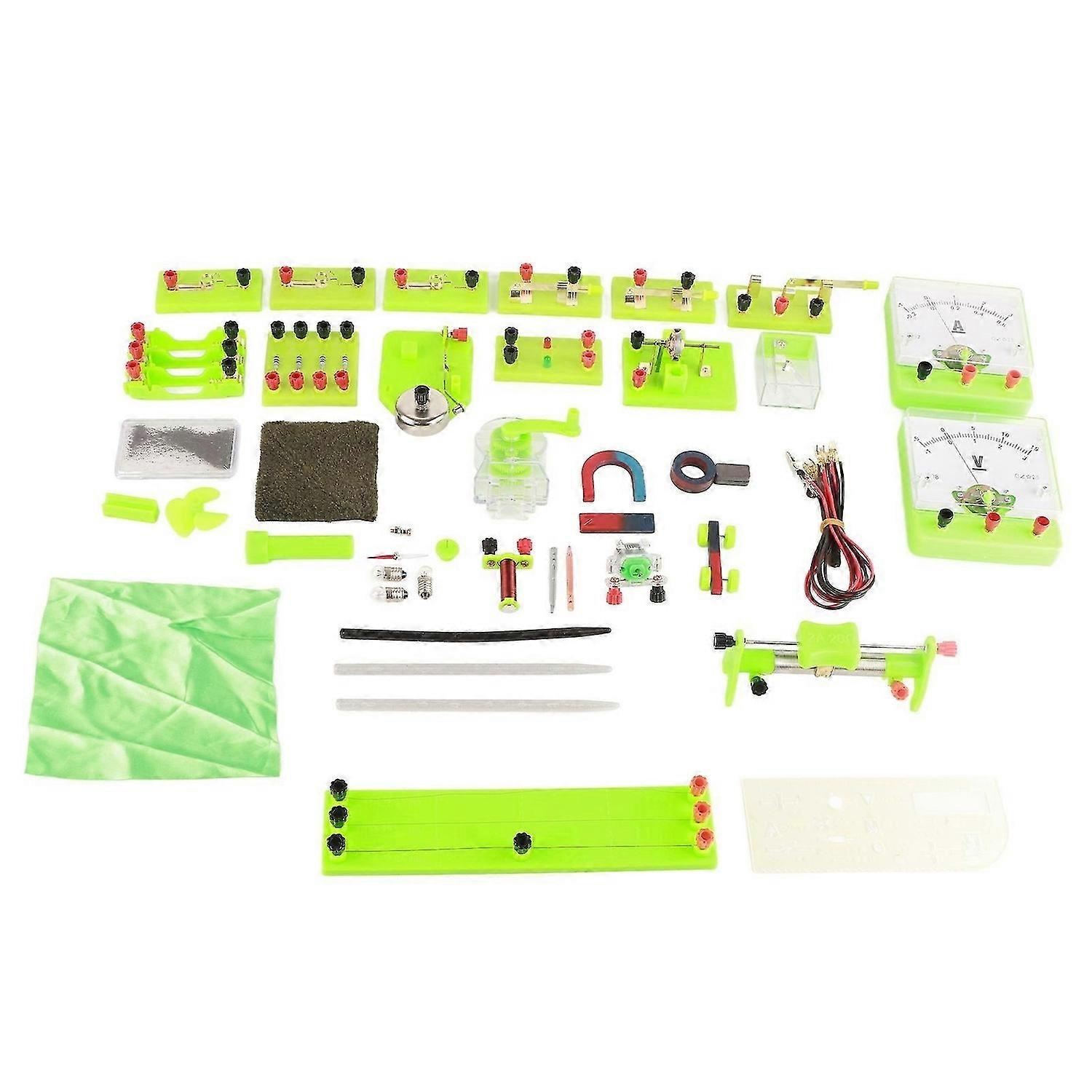विवरण
Feature:1. The equipment is complete, including a complete set of equipment to meet physical electromagnetics, which is convenient to use.2. It has a wide range of applications and can meet the most basic experimental functions such as series circuits, Joule's law, etc.3. The experimental equipment is interesting, can vividly explain the experimental principles, and is convenient for teaching use.4. The product does not contain batteries. You need to prepare additional batteries for use in the experiment.5. Rugged and durable, made of ABS material, long service life, repeatable experiment demonstration.Specification:Item Type: Physical Experiment KitMaterial: ABSModel: A1Battery: 1.5V 3xAA Batteries (Not Included)Purpose: Battery teaching experiment in middle and high schoolApplicable experiment:1. Static Electricity, Electric Charge1) Experimental Equipment: 2 x Glass Rods, rubber rods, multi-function brackets, silk, fur2) Practical Operation: Rub the two glass rods with silk, gently place one glass rod on the holder (so that it can rotate freely), and hold the other glass rod close to the glass rod on the holder. Observe the phenomenon. Hold the rubber rod rubbed with fur, and approach the glass rod rubbed with silk on the support. Observe the phenomenon.2. Know simple circuits1) Experimental Equipment: 2 x Batteries (Not Included), a battery box, a light bulb, a lamp holder, a number of wires, and a switch.2) Practical Operation: Connect the battery, lamp holder, and switch with wires as shown in the figure to make the small bulb glowing and control its on and off.3. Use light-emitting diodes to study the direction of current1) Experimental equipment: 2 x Batteries (Not Included), battery box, several wires, light-emitting diodes, and a switch.2) The diode has the characteristic of unidirectional conduction. The current flows in from the anode of the light-emitting diode and flows out from the cathode, and the light-emitting diode emits light. If current flows in from the cathode of the light-emitting diode, the light-emitting diode does not emit light. Based on this, the direction of the current can be explored.Note: The light-emitting diodes in this set of experimental equipment can only use 2 x Batteries, otherwise it will be broken down and damaged.4. Connect series circuit and parallel circuit1) Experimental Equipment: batteries (Not Included), battery box, bulbs, wires, lamp holders, switches.2) Practical Operation:Compose the circuit, observe and explore the characteristics of the circuit current;Change the switching method, explore the role of the series circuit switch, and explore the characteristics of the series circuit:Form a parallel circuit, analyze the direction of the current; close each switch separately, look at the function of each switch in the parallel circuit, and analyze which part is a branch circuit and which part is a main circuit.5. Use an ammeter to measure current1) Experimental Equipment: 1 x Battery (Not Included), battery box, ammeter, one bulb, one lamp holder, several wires, and one switch.2) Practical Operation:Estimate the current and select the range before measuring.The ammeter can be connected to the circuit correctly and connected in series.Connect the circuit as shown in the figure to measure the current of a bulb and learn the reading of the ammeter.It is absolutely not allowed to connect the ammeter directly to the circuit without any electrical appliances, otherwise the ammeter may be burnt out.6. Measure the voltage with a voltmeter1) Experimental Equipment: Battery (Not Included), battery box, voltmeter, bulb, lamp holder, several wires, switch.2) Experimental Operation:Recognize the scale of the voltmeter, recognize the two ranges of the voltmeter and the corresponding corresponding division values.The voltmeter can be connected to the circuit correctly.Connect the diagram to the circuit. When the small bulb is on, use a voltmeter to measure the voltage at both ends of the bulb. What is the voltage across the bulb when the light bulb is off?7. Exploring the law of series battery pack voltage1) Experimental equipment: 3 x batteries (Not Included), battery box, a voltmeter, several wires, and a switch.2) Practical Operation:Use a voltmeter to measure the voltage of three single-cell batteries, then connect two of them in series to measure the voltage, and analyze the relationship between the total voltage of the two batteries in series and the voltage of each cell.Re-measure the relationship between the total voltage of the battery composed of 3 batteries and the voltage of each battery.8. Explore the law of parallel battery pack voltage1). Experimental equipment: 3 x batteries (Not Included), battery box, a voltmeter, a number of wires, a switch2) Practical operation: Measure the voltage of one battery according to the previous section, then connect the batteries of the same voltage in parallel, and analyze the relationship between the voltage after the paral
-
Fruugo ID:
387488104-831843873
-
EAN:
6950044983309





